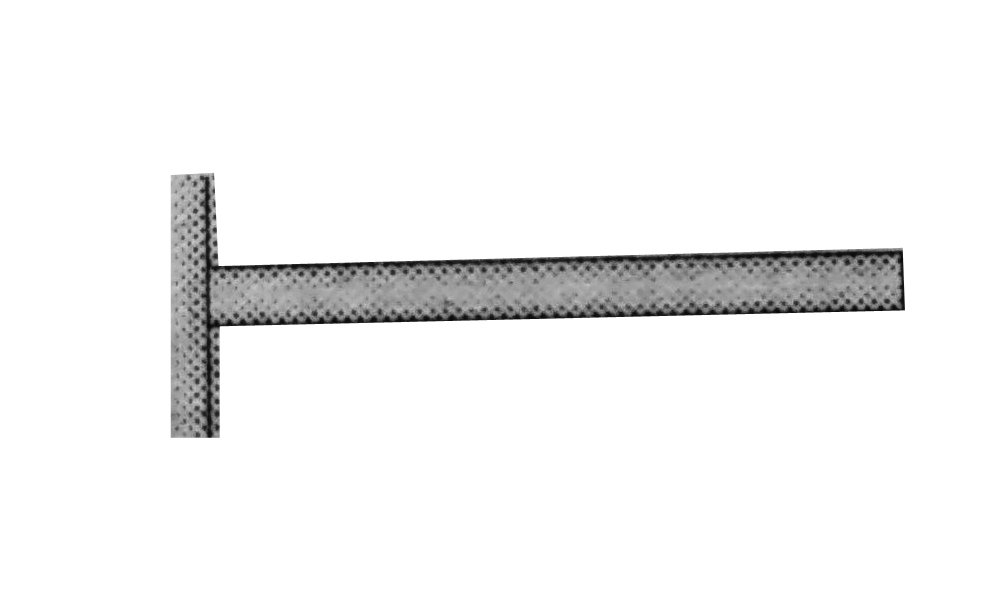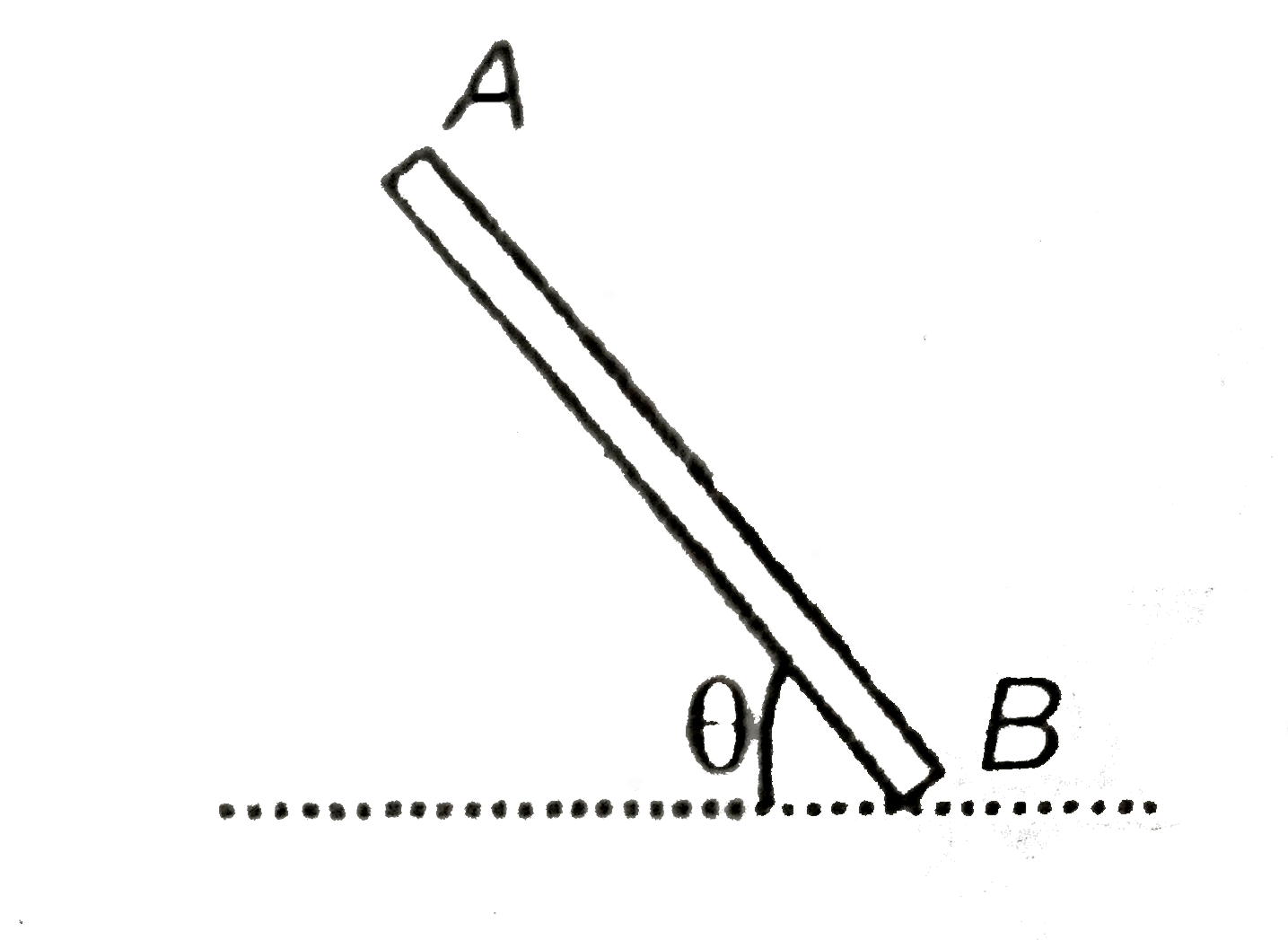One end of a steel rod of radius R = 9.5 mm and length L = 81 cm is held in a vise. A force of magnitude F = 62 kN is then applied perpendicularly to the end face (uniformly across the area) at the other end, pulling directly away from the vise. What are the stress on the rod and the elongation ΔL and strain of the rod ?
To solve the problem, we need to find the stress, elongation (ΔL), and strain of the steel rod. Let's break down the solution step by step.
Step 1: Convert the given measurements to SI units
- Radius (R): Given as 9.5 mm, we convert this to meters:
R=9.5mm=9.5×10−3m
- Length (L): Given as 81 cm, we convert this to meters:
L=81cm=81×10−2m=0.81m
- Force (F): Given as 62 kN, we convert this to Newtons:
F=62kN=62×103N
Step 2: Calculate the cross-sectional area (A) of the rod
The area of a circular cross-section is given by the formula:
A=πR2
Substituting the value of R:
A=π(9.5×10−3)2
Calculating this gives:
A≈π(9.52×10−6)≈2.827×10−5m2
Step 3: Calculate the stress (σ) on the rod
Stress is defined as force per unit area:
σ=FA
Substituting the values:
σ=62×1032.827×10−5≈2.19×107N/m2
Step 4: Calculate the strain (ε)
According to Hooke's Law, stress is proportional to strain:
σ=E⋅ϵ
Where E is the Young's modulus for steel, approximately 2×1011N/m2. Rearranging for strain:
ϵ=σE
Substituting the values:
ϵ=2.19×1072×1011≈1.095×10−4
Step 5: Calculate the elongation (ΔL)
Elongation can be calculated using the formula:
ΔL=ϵ⋅L
Substituting the values:
ΔL=(1.095×10−4)⋅(0.81)≈8.87×10−5m≈0.0887mm
Summary of Results
- Stress (σ): 2.19×107N/m2
- Strain (ε): 1.095×10−4
- Elongation (ΔL): 0.0887mm
- Radius (R): Given as 9.5 mm, we convert this to meters:
R=9.5mm=9.5×10−3m
- Length (L): Given as 81 cm, we convert this to meters:
L=81cm=81×10−2m=0.81m
- Force (F): Given as 62 kN, we convert this to Newtons:
F=62kN=62×103N
The area of a circular cross-section is given by the formula:
A=πR2
Substituting the value of R:
A=π(9.5×10−3)2
Calculating this gives:
A≈π(9.52×10−6)≈2.827×10−5m2
Stress is defined as force per unit area:
σ=FA
Substituting the values:
σ=62×1032.827×10−5≈2.19×107N/m2
According to Hooke's Law, stress is proportional to strain:
σ=E⋅ϵ
Where E is the Young's modulus for steel, approximately 2×1011N/m2. Rearranging for strain:
ϵ=σE
Substituting the values:
ϵ=2.19×1072×1011≈1.095×10−4
Elongation can be calculated using the formula:
ΔL=ϵ⋅L
Substituting the values:
ΔL=(1.095×10−4)⋅(0.81)≈8.87×10−5m≈0.0887mm
- Stress (σ): 2.19×107N/m2
- Strain (ε): 1.095×10−4
- Elongation (ΔL): 0.0887mm
Topper's Solved these Questions
- BOOK - RESNICK AND HALLIDAYCHAPTER - ELASTICITYEXERCISE - PROBLEMS7videos
ELASTICITY
- BOOK - RESNICK AND HALLIDAYCHAPTER - ELASTICITYEXERCISE - CHECKPOINT1videos
ELASTICITY
- BOOK - RESNICK AND HALLIDAYCHAPTER - CURRENT AND RESISTANCEEXERCISE - Practice Questions (Integer Type)3videos
CURRENT AND RESISTANCE
- BOOK - RESNICK AND HALLIDAYCHAPTER - ELECTRIC CHARGES AND FIELDSEXERCISE - Practice Questions (Integer Type )3videos
ELECTRIC CHARGES AND FIELDS
Similar Questions
The mass of an uniform ladder of length l increases uniformly from one end A to the other end B,
find the position of the centre of mass from end A.View SolutionA uniform rod of mass m and length l is struck at an end by a force F perpendicular to the rod for a short time interval t. Calculate
the kinetic energy of the rod andView Solution
Knowledge Check
- Question 1 - Select One

In the given figure, a rod is free at one end and other end is fixed. When we change the temperature of rod by Δθ, then strain produced in the rod will beAαΔθB12αΔθCzeroDinformation incomplete - Question 2 - Select One
A structural steel rod has a radius r(=10 mm) and a length l(=1 m). When a force F(= 100 kN) is applied, it stretches it along its length. Young's modulus of elasticity of the structural steel is 2.0×1011Nm−2. What is the elastic energy density of the steel rod ?
A6.12×104Jm−3B1.25×104Jm−3C2.5×104Jm−3D2.5×105Jm−3 - Question 3 - Select One
The radius of gyration of a uniform rod of length l about an axis passing through one of its ends and perpendicular to its length is
Al√2Bl3Cl√3Dl2
A rod of length 2 m is held vertically with one of its end on the floor. It is then allowed to fall. Calculate the speed of the other end when it strikes the floor. Assume that the end of the rod which is on the floor does not slip.
View SolutionA rod of length l is released from the vertical position on a smooth horizontal plane. What is the nature of motion of the free end of the rod ?
View SolutionA rod AB of mass M and length L is shown in figure. End A of rod is hinged and end B is lying on the ground. Find the

Horizontal component of the force applied by the hingeView SolutionA rod of mass M and length L lying horizontally is free to rotate about a vertical axis through its end. A horizontal force F on the rod at the other end, the force always remains perpendicular to the rod. Find the angular velocity of the rod when it has turned an angle π/2.
View SolutionMoment of inertia of a thin rod of mass m and length l about an axis passing through a point l/4 from one end and perpendicular to the rod is
View Solution

